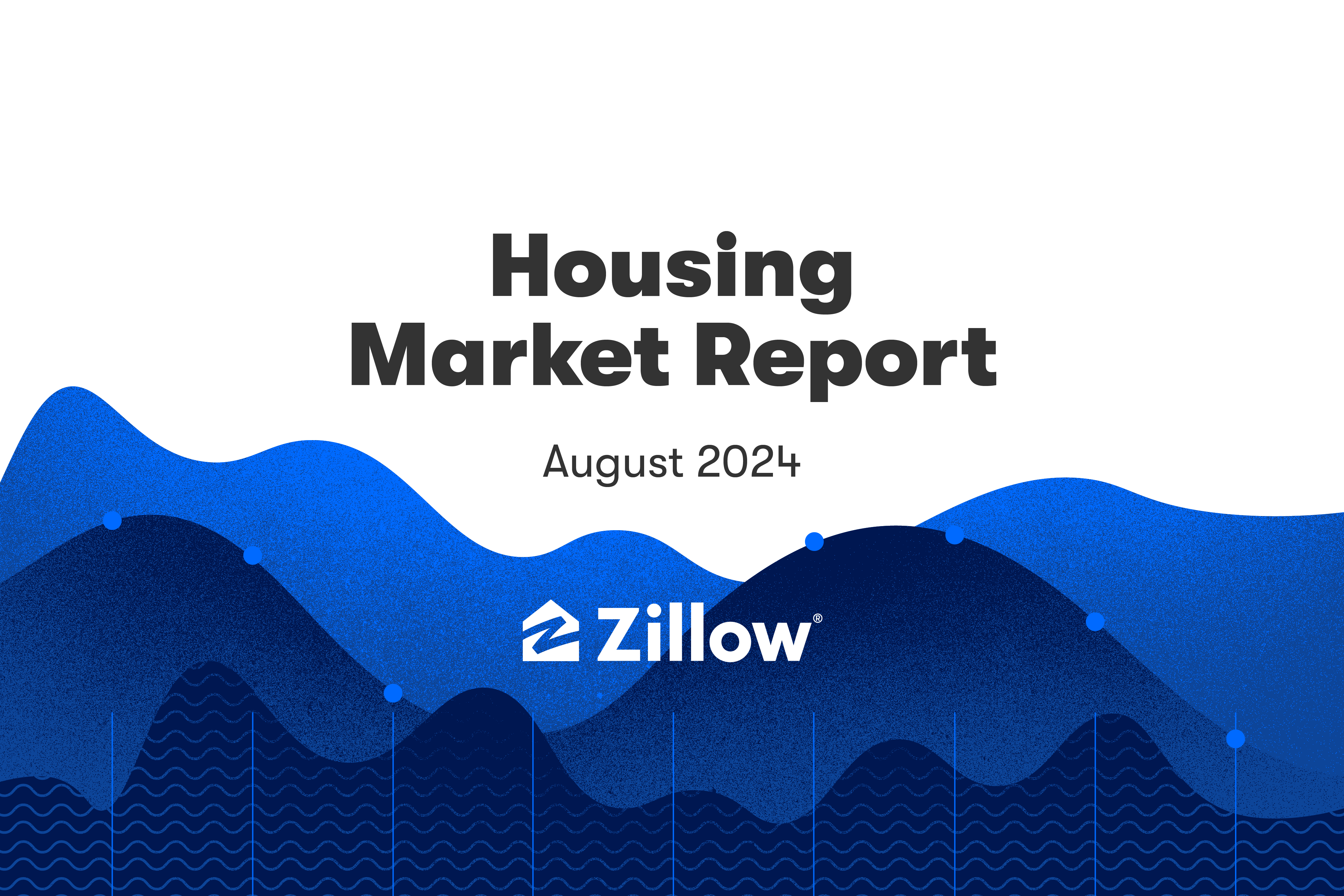Rate drops and more inventory mean opportunities for buyers (August 2024 Market Report) - Zillow Research

In the August 2024 Market Report, Skylar Olsen highlights the current real estate market trends, emphasizing the opportunities for home buyers due to lower mortgage rates and increased inventory. The report notes that the decline in mortgage rates has significantly improved affordability, making home purchases more accessible. This trend is expected to extend buyer competition into the fall, a period typically characterized by a slowdown in market activity.
The report details that the national monthly payment on a typical home purchase has decreased by over $100 since May, with more substantial savings in high-cost areas like San Francisco, where the monthly payment has dropped by over $300. This reduction in mortgage rates not only lowers costs but also broadens the range of homes that buyers can qualify for, effectively increasing their choices.
Several metrics indicate a shift in favor of buyers. The Zillow market heat index moved to neutral in July, a change from the seller-dominated market of the past two years. Homes are taking longer to sell compared to recent history but are still selling faster than pre-pandemic times. In August, homes took an average of 20 days to go pending, slightly longer than in July but quicker than the pre-pandemic average.
Inventory levels have also seen a rise, with nearly 1.18 million homes on the market, the highest since September 2020. This increase in inventory, coupled with lower mortgage rates, could slow the typical seasonal cooldown in market activity. The report notes that most homeowners are influenced to sell by life events rather than mortgage rates, which could alter the usual market dynamics.
Home values have shown varied trends across different metro areas. The typical home value in the U.S. was $362,143 in August, with a typical monthly mortgage payment of $1,827, reflecting a 3.4% decrease from July. Home values increased month-over-month in nine of the 50 largest metro areas, with the highest gains in Buffalo, New York, Providence, Hartford, and Philadelphia. Conversely, home values fell in 37 major metro areas, with the largest declines in San Francisco, San Jose, Austin, Denver, and New Orleans.
Year-over-year, home values are up in 44 of the 50 largest metro areas, with the highest annual gains in San Jose, Hartford, Providence, New York, and San Diego. However, five major metro areas saw year-over-year declines, with the most significant drops in New Orleans, Austin, San Antonio, Birmingham, and Dallas. The typical mortgage payment has decreased by 2.9% from last year but has increased by 103.8% since pre-pandemic levels.
New listings decreased by 1.1% month-over-month in August but increased by 0.8% compared to last year. Despite this, new listings are still 21.3% lower than pre-pandemic levels. For-sale inventory increased by 0.2% from last month and by 22.1% compared to last year, although it remains 30.8% lower than pre-pandemic levels.
The report also highlights trends in price cuts and homes sold above list price. In August, 25.9% of listings had a price cut, slightly down from July but higher than August 2023. Additionally, 33.4% of homes sold above their list price, a decrease from June and July 2023. Newly pending sales decreased by 5% from the previous month and by 2.9% from last year. The median days to pending increased to 20 days in August, up by two days from July and by seven days from last year.
Zillow’s market heat index indicates a neutral market nationally, with the strongest seller’s markets in Buffalo, Hartford, San Jose, Boston, and New York, and the strongest buyer’s markets in New Orleans, Miami, Jacksonville, Austin, and Tampa.
Regarding rents, the report notes a 0.2% month-over-month increase in asking rents in August, which is below the pre-pandemic average for this time of year. Rents are up 3.4% from last year, with the highest annual increases in Hartford, Cleveland, Louisville, Richmond, and Virginia Beach. Rents fell on a monthly basis in Austin and Boston but increased year-over-year in 49 of the 50 largest metro areas.





Start the discussion
Become a member of Crib Metrics - Fresh Housing Market Insights and Analysis to start chatting with our AI Real Estate Market Analyst about the article Rate drops and more inventory mean opportunities for buyers (August 2024 Market Report) - Zillow Research
Already a member?